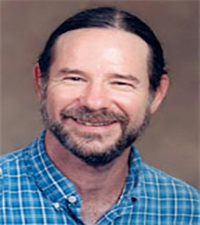
Second in size only to the Florida Everglades, the vast Lake Agazzi peatland of northeastern Minnesota represents one of the largest wetland areas of the continental United States. Now, a pair of Florida State University researchers will visit this largely unspoiled region to collect data that may lead to a better understanding of global warming and its effects on the environment.
Jeffrey Chanton, the John Widmer Winchester Professor of Oceanography at FSU, and William T. Cooper, a professor of analytical and environmental chemistry in the department of chemistry and biochemistry, have received a research grant in the amount of $493,448 from the National Science Foundation to study the carbon balance in Minnesota’s peatlands—a possible indicator of climate changes brought on by global warming. The grant to FSU is part of a larger $3-million grant that also includes the University of Minnesota, Syracuse University, the University of Maine and the U.S. Geologic Survey.
“Peatlands represent one of the largest carbon stores on the planet,” Chanton said. “Since the end of the last ice age some 18,000 years ago, approximately 900 trillion pounds of carbon dioxide have been transferred from the atmosphere to the organic soils of peatlands around the world. We want to know if this landform is still actively growing and absorbing carbon, or if climatic conditions have been altered to the point where the mass is wasting away and decomposing. Peatland decomposition will result in both carbon dioxide and methane being released into the atmosphere and will serve as a positive feedback to enhance further climate change.”

“We want to understand the chemistry and biology responsible for keeping this large store of organic matter locked up,” Cooper said. “And is it still locked up? Or is it decomposing and giving off methane and carbon dioxide to the atmosphere?”
A peatland is a very large wetland that contains as much as 30 feet of partly decomposed or undecomposed organic matter. Half of the weight of that peat is in the form of carbon.
“The carbon in the peat comes from carbon dioxide,” Chanton said. “Mosses and other peatland plants take carbon dioxide out of the air and store it. When the plants die, they rot only at a very slow rate, because the climate in the peatlands is too cold and wet.”
“As a result, all of that carbon, rather than being returned to the atmosphere as carbon dioxide, becomes stored in peat,” Cooper said. “About one-third of the carbon in all the topsoil in the world is found in peatlands, but at this point we cannot predict the relationship between carbon structure and long-term stability.”
Worldwide, the wilderness of peat stretches across Alaska, Canada, Siberia and Scandinavia, encompassing more than 9 million square miles.
Chanton and Cooper’s five-year National Science Foundation grant will enable Chanton to examine emissions of greenhouse gases from the Lake Agazzi peatland and determine the age of specific portions of organic matter. Cooper, meanwhile, will apply some of the advanced instrumentation he has developed with colleagues at FSU’s National High Magnetic Field Laboratory to study the structure of the peat and what causes it to resist decomposition.
Both scientists will travel to Minnesota this summer to obtain samples. Because the area they will be visiting has no roads, they will fly by helicopter to the remote locations.
This is not their first project involving isolated territory for global warming research. Cooper has studied peat chemistry in many remote areas of the Florida Everglades, including the extensive mangrove forests. Chanton recently took part in an international project with a team of scientists to measure the rate at which climate change was causing the Siberian permafrost to melt and release methane. The team’s alarming findings were published in the Sept. 7 issue of the prestigious science journal Nature.




